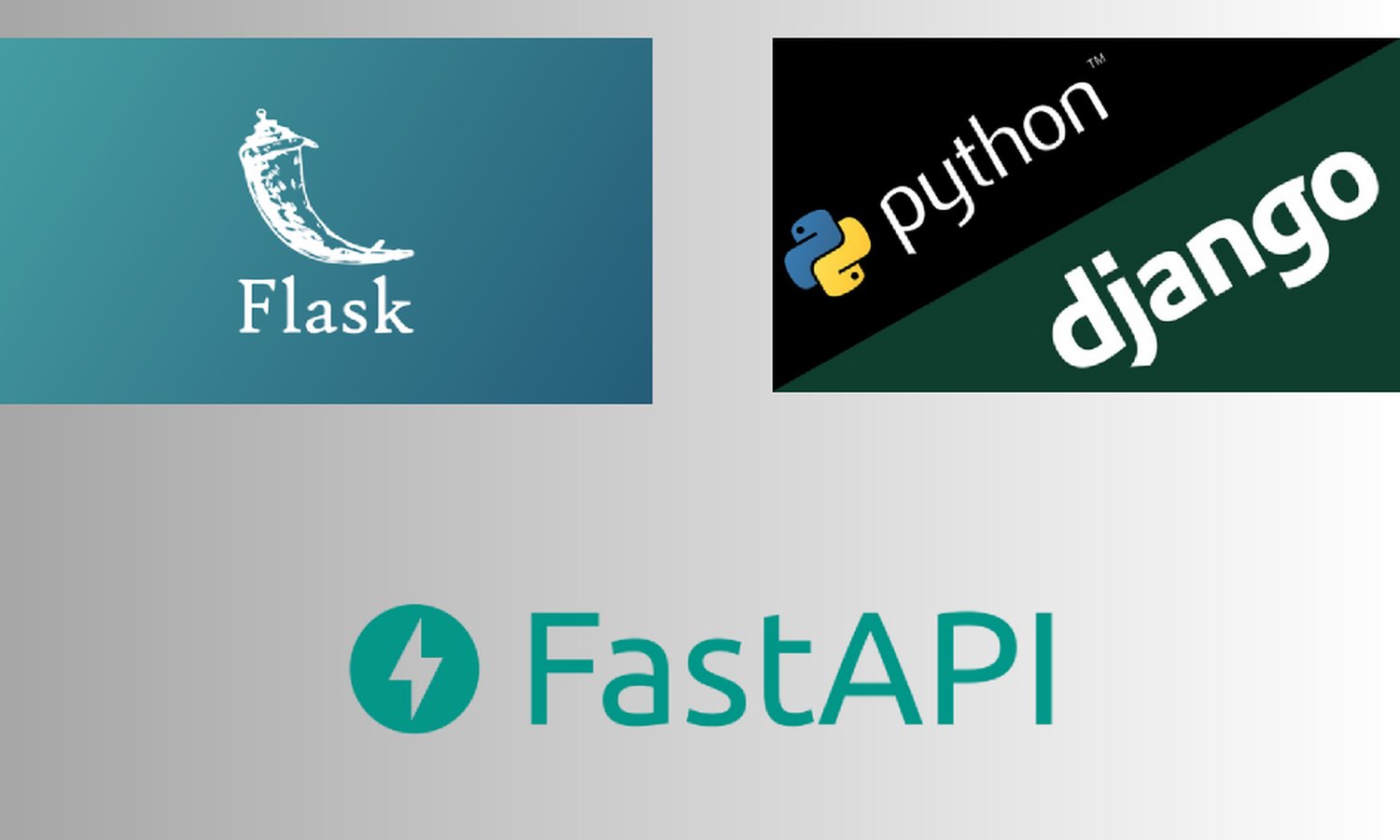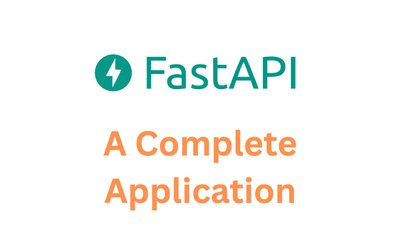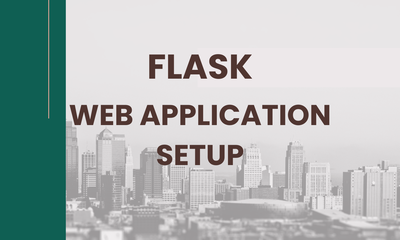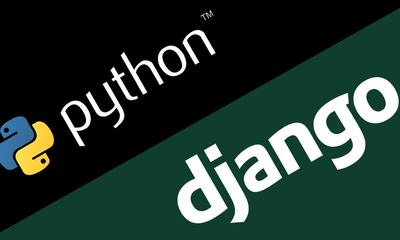So sánh FastAPI, Flask và Django: Chọn framework web Python phù hợp cho dự án của bạn
By khoanc, at: 23:07 Ngày 04 tháng 5 năm 2023
Thời gian đọc ước tính: __READING_TIME__ phút


1. Giới thiệu
Để xây dựng một ứng dụng web sử dụng Python, có một số framework để lựa chọn, mỗi framework có những điểm mạnh và đặc điểm riêng. Trong bài viết này, chúng ta sẽ so sánh ba framework web Python phổ biến: FastAPI, Flask, và Django. Bằng cách hiểu về các tính năng, lợi ích và nhược điểm của mỗi framework, chúng ta có thể đưa ra quyết định sáng suốt về framework nào phù hợp với yêu cầu dự án của mình.
2. Tổng quan về FastAPI
Tính năng và Lợi ích
FastAPI là một framework web hiện đại, hiệu năng cao, được biết đến với tốc độ và sự đơn giản. Framework này được xây dựng trên Starlette, một framework web bất đồng bộ, và tận dụng các chú thích kiểu dữ liệu của Python để tự động xác thực dữ liệu và tạo tài liệu.
Các tính năng chính của FastAPI bao gồm:
- Hiệu năng cao: Tốc độ vượt trội và chi phí thấp, nhờ khả năng bất đồng bộ và tạo mã bằng mô hình Pydantic.
- Tự động tạo tài liệu: Tài liệu API tương tác được tạo tự động, với giao diện người dùng/trải nghiệm người dùng tốt. Do đó, việc tích hợp sẽ dễ dàng hơn.
- Kiểm tra kiểu dữ liệu: Nhờ các gợi ý kiểu dữ liệu của Python, framework này cung cấp khả năng xác thực dữ liệu tự động, giảm thiểu khả năng xảy ra lỗi thời gian chạy.
- Hỗ trợ WebSockets: FastAPI tích hợp liền mạch với WebSockets, cho phép giao tiếp hai chiều thời gian thực giữa máy khách và máy chủ.
- Tích hợp dễ dàng: FastAPI hoạt động tốt với các thư viện và framework Python hiện có, cho phép tích hợp liền mạch vào hệ sinh thái của dự án.
Lợi thế về Hiệu năng
Thiết kế bất đồng bộ và kỹ thuật tạo mã góp phần vào hiệu năng tuyệt vời của nó. Do đó, framework này vượt trội hơn cả Flask và Django về tốc độ xử lý yêu cầu và thông lượng. Khả năng xử lý tải cao và khả năng mở rộng hiệu quả làm cho FastAPI trở thành lựa chọn ưu tiên cho các ứng dụng quan trọng về hiệu năng.
Trường hợp sử dụng
Nếu bạn đang tìm kiếm một ứng dụng hiệu năng cao và có khả năng mở rộng, thì FastAPI là câu trả lời. Ví dụ:
- Phát triển API: Khả năng tạo tài liệu tự động và kiểm tra kiểu dữ liệu làm cho FastAPI trở thành lựa chọn tuyệt vời để xây dựng các API mạnh mẽ và được lập tài liệu tốt.
- Ứng dụng thời gian thực: Với hỗ trợ WebSockets, FastAPI rất phù hợp để phát triển các ứng dụng thời gian thực như hệ thống trò chuyện, công cụ cộng tác và bảng điều khiển trực tiếp.
- Microservices: Tính chất nhẹ và khả năng bất đồng bộ làm cho nó phù hợp để xây dựng các microservices cần xử lý một số lượng lớn yêu cầu đồng thời.
Tổng quan về Flask
Tính năng và Lợi ích
Flask là một framework web nhẹ và linh hoạt, tuân theo triết lý tối giản. Nó cung cấp các công cụ cần thiết cho phát triển web mà không áp đặt các cấu trúc cứng nhắc. Một số tính năng chính của Flask bao gồm:
- Sự đơn giản: Dễ học, dễ thích nghi và tùy chỉnh.
- Khả năng mở rộng: Thiết kế mô-đun và hệ sinh thái mở rộng các tiện ích mở rộng
- Tính linh hoạt: Dễ tùy chỉnh, lựa chọn thiết kế linh hoạt
- Chi phí thấp: Tính chất nhẹ đảm bảo mức tiêu thụ tài nguyên tối thiểu, do đó, điều này phù hợp cho các dự án nhỏ và vừa.
- Được sử dụng rộng rãi: Cộng đồng hoạt động lớn, dẫn đến một bộ tài nguyên, hướng dẫn và hỗ trợ cộng đồng phong phú
Tính chất nhẹ
Phương pháp tiếp cận tối giản của Flask làm cho nó trở thành một framework nhẹ với ít phụ thuộc hơn so với các framework khác như Django. Do đó, các nhà phát triển có nhiều quyền kiểm soát hơn đối với cấu trúc ứng dụng và lựa chọn các thư viện và công cụ mà họ thích.
Trường hợp sử dụng
Flask rất phù hợp cho nhiều kịch bản phát triển web, bao gồm:
- Tạo nguyên mẫu nhanh: Đây là lựa chọn tốt nhất cho bản chứng minh khái niệm (POC) do triết lý đơn giản của nó
- Các dự án nhỏ và vừa: Tính chất nhẹ và linh hoạt của nó làm cho nó lý tưởng cho các dự án nhỏ và vừa
- RESTful APIs: Thiết kế tối giản và khả năng mở rộng làm cho nó phù hợp để xây dựng RESTful API với các yêu cầu tùy chỉnh.
- Dự án giáo dục: Sự đơn giản và tài liệu toàn diện của nó làm cho nó trở thành lựa chọn phổ biến cho mục đích giáo dục và các dự án thân thiện với người mới bắt đầu.
projects.
Tổng quan về Django
Tính năng và Lợi ích
Django là một framework web mạnh mẽ và đầy đủ tính năng, tuân theo triết lý "đã bao gồm sẵn". Một bộ công cụ và thư viện toàn diện được tích hợp sẵn, giúp dễ dàng phát triển các ứng dụng web phức tạp.
Một số tính năng chính của Django bao gồm:
- ORM và hỗ trợ cơ sở dữ liệu: Một lớp ánh xạ đối tượng quan hệ (ORM) mạnh mẽ giúp các nhà phát triển tương tác với cơ sở dữ liệu bằng các đối tượng Python.
- Giao diện quản trị: Giao diện quản trị tích hợp cung cấp một giao diện quản trị dễ sử dụng để quản lý dữ liệu ứng dụng.
- Bảo mật: Nhiều tính năng bảo mật như bảo vệ chống lại các lỗ hổng web phổ biến, cơ chế xác thực và ủy quyền.
- Khả năng mở rộng: Ứng dụng có khả năng mở rộng và xử lý lưu lượng truy cập cao dễ dàng với các mẫu thiết kế và quyết định kiến trúc của Django
- Cộng đồng và hệ sinh thái: Cộng đồng lớn và năng động, có nghĩa là rất nhiều tài nguyên, thư viện và gói của bên thứ ba có sẵn để phát triển.
Tính mạnh mẽ và khả năng mở rộng
Phương pháp tiếp cận đã bao gồm sẵn và triết lý ưu tiên quy ước hơn cấu hình của Django làm cho nó trở thành lựa chọn tuyệt vời để xây dựng các ứng dụng web mạnh mẽ và có khả năng mở rộng. Các tính năng tích hợp sẵn của nó cho việc xác thực, bảo mật và tương tác cơ sở dữ liệu giúp đơn giản hóa việc phát triển và giảm mã boilerplate.
Trường hợp sử dụng
Django là lựa chọn tốt nhất cho các ứng dụng phức tạp, bao gồm:
- Ứng dụng cấp doanh nghiệp: Các ứng dụng doanh nghiệp quy mô lớn được xử lý khá tốt nhờ sự mạnh mẽ, khả năng mở rộng và bộ tính năng mở rộng của Django
- Hệ thống quản lý nội dung (CMS): Giao diện quản trị tích hợp và khả năng quản lý nội dung phù hợp để xây dựng CMS và nền tảng xuất bản.
- Nền tảng thương mại điện tử: Tính năng bảo mật, ORM và khả năng mở rộng phù hợp để phát triển các nền tảng thương mại điện tử với các mô hình dữ liệu và logic nghiệp vụ phức tạp.
So sánh FastAPI, Flask và Django
Khi chọn một framework web cho dự án của bạn, điều cần thiết là phải xem xét nhiều yếu tố khác nhau. Hãy so sánh FastAPI, Flask và Django trên nhiều khía cạnh khác nhau để giúp bạn đưa ra quyết định sáng suốt:
| Khía cạnh | FastAPI | Flask | Django |
|---|---|---|---|
| Hiệu năng | Hiệu năng cao với khả năng bất đồng bộ | Nhẹ với hiệu năng vừa phải | Mạnh mẽ và có khả năng mở rộng cho các ứng dụng quy mô lớn |
| Tốc độ phát triển | Phát triển nhanh chóng với tài liệu tự động | Tạo nguyên mẫu nhanh và cấu trúc ứng dụng đơn giản | Thời gian phát triển dài hơn do mã boilerplate và độ phức tạp |
| Khả năng mở rộng | Có khả năng mở rộng cao và hiệu quả cho tải cao | Phù hợp với các dự án nhỏ và vừa | Mạnh mẽ và có khả năng mở rộng cho các ứng dụng quy mô lớn |
| Khó khăn khi học | Khó khăn khi học vừa phải do các tính năng nâng cao | Dễ học và bắt đầu | Khó khăn khi học cao hơn do kiến trúc phức tạp |
| Hỗ trợ cộng đồng | Cộng đồng đang phát triển với nhiều tài nguyên và hướng dẫn | Cộng đồng năng động với nhiều gói của bên thứ ba | Cộng đồng lớn và trưởng thành với nhiều tài nguyên |
| Tiện ích mở rộng và Plugin | Số lượng tiện ích mở rộng và plugin có sẵn hạn chế | Hệ sinh thái phong phú các tiện ích mở rộng của bên thứ ba | Hệ sinh thái rộng lớn các tiện ích mở rộng và gói |
| Tài liệu | Được lập tài liệu tốt với tài liệu API tự động | Tài liệu toàn diện và nhiều tài nguyên học tập | Tài liệu rộng rãi và các hướng dẫn chính thức |
| Hỗ trợ cơ sở dữ liệu | Hỗ trợ nhiều cơ sở dữ liệu với ORM tích hợp | Hỗ trợ nhiều cơ sở dữ liệu với sự trợ giúp của các tiện ích mở rộng | ORM mạnh mẽ với hỗ trợ nhiều cơ sở dữ liệu |
| Kiểm tra và gỡ lỗi | Hỗ trợ kiểm tra tuyệt vời với máy khách kiểm tra tích hợp | Khả năng kiểm tra cơ bản với nhiều tiện ích mở rộng | Khung kiểm tra toàn diện và công cụ gỡ lỗi |
| Sự chấp nhận của cộng đồng | Đang ngày càng phổ biến với lượng người dùng ngày càng tăng | Được sử dụng rộng rãi và phổ biến trong cộng đồng Python | Được thiết lập và sử dụng rộng rãi trong cộng đồng Python |
| Phù hợp với quy mô dự án | Phù hợp với các dự án nhỏ đến quy mô lớn | Phù hợp với các dự án nhỏ và vừa | Phù hợp với các dự án vừa và lớn |
| Tính linh hoạt và tùy chỉnh | Cung cấp các tùy chọn linh hoạt và tùy chỉnh | Rất linh hoạt và có thể tùy chỉnh | Cung cấp tính linh hoạt trong các quy ước đã được thiết lập của nó |
| Ưu điểm | - Hiệu năng vượt trội với thông lượng cao - Tự động tạo tài liệu API - Kiểm tra kiểu dữ liệu mạnh mẽ và xác thực dữ liệu tự động - Hỗ trợ tuyệt vời cho lập trình bất đồng bộ - Dễ dàng tích hợp với các thư viện và framework Python khác |
- Nhẹ và dễ bắt đầu - Kiến trúc linh hoạt và có thể tùy chỉnh - Hệ sinh thái mở rộng các tiện ích mở rộng của bên thứ ba - Phù hợp với các dự án nhỏ và vừa - Nhiều tài nguyên và hướng dẫn học tập |
- Framework mạnh mẽ và toàn diện với "đã bao gồm sẵn" - Giao diện quản trị tích hợp để quản lý dễ dàng - Các tính năng bảo mật tuyệt vời và bảo vệ chống lại các lỗ hổng phổ biến - Lý tưởng cho các ứng dụng quy mô lớn và cấp doanh nghiệp - Hỗ trợ cộng đồng được thiết lập tốt và rộng rãi |
| Nhược điểm | - Framework tương đối mới với cộng đồng nhỏ hơn so với Flask và Django - Số lượng tiện ích mở rộng và plugin có sẵn hạn chế - Khó khăn khi học cao hơn do các tính năng và khái niệm nâng cao |
- Các tính năng tích hợp sẵn hạn chế hơn so với Django - Ít phù hợp với các ứng dụng quy mô lớn có lưu lượng truy cập cao - Cần cấu hình thủ công cho các chức năng phức tạp |
- Thời gian phát triển dài hơn do các tính năng và quy ước được tích hợp sẵn - Kiến trúc phức tạp và mã boilerplate mở rộng - Ít linh hoạt hơn so với FastAPI và Flask |
-
Kết luận
Tóm lại, việc chọn framework web phù hợp phụ thuộc vào yêu cầu dự án của bạn, tốc độ phát triển, nhu cầu về hiệu năng và mức độ hỗ trợ cộng đồng mà bạn mong muốn.
- Chọn FastAPI nếu bạn ưu tiên hiệu năng cao, tài liệu tự động và khả năng bất đồng bộ.
- Chọn Flask nếu bạn coi trọng sự đơn giản, tính linh hoạt và một framework nhẹ cho phép tạo nguyên mẫu nhanh.
- Cân nhắc Django nếu bạn cần một framework mạnh mẽ, đầy đủ tính năng với một bộ công cụ toàn diện, lý tưởng cho các ứng dụng quy mô lớn và cấp doanh nghiệp.
Đánh giá nhu cầu và ưu tiên của dự án và chọn framework phù hợp nhất với mục tiêu và phong cách phát triển của bạn.
Hãy nhớ rằng, mỗi framework đều có điểm mạnh và nhược điểm riêng, vì vậy hãy xem xét các yêu cầu cụ thể của dự án trước khi đưa ra quyết định.
Tài liệu tham khảo
- https://fastapi.tiangolo.com/lo/
- https://flask.palletsprojects.com/en/2.3.x/
- https://www.djangoproject.com/
- https://www.section.io/engineering-education/choosing-between-django-flask-and-fastapi/
- https://dev.to/kateryna_pakhomova/django-vs-flask-vs-fastapi-for-software-founders-45k4
- https://analyticsindiamag.com/django-vs-flask-vs-fastapi-a-comparative-guide-to-python-web-frameworks/





